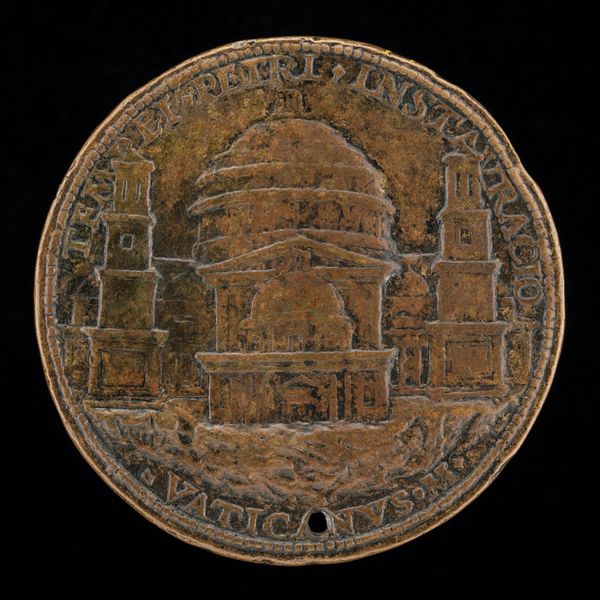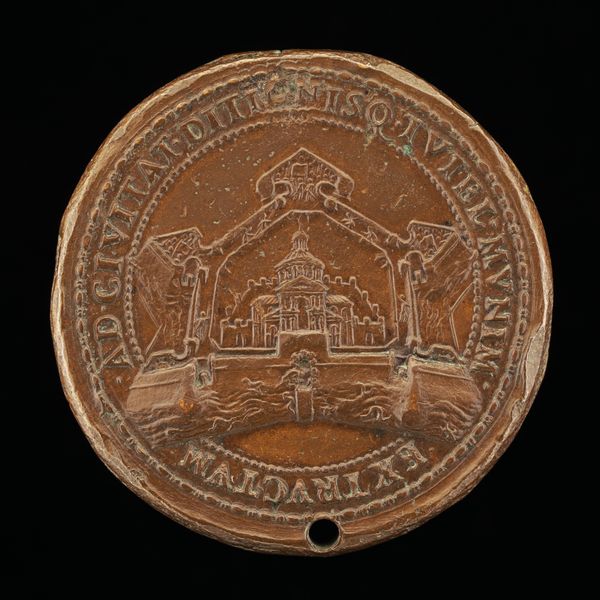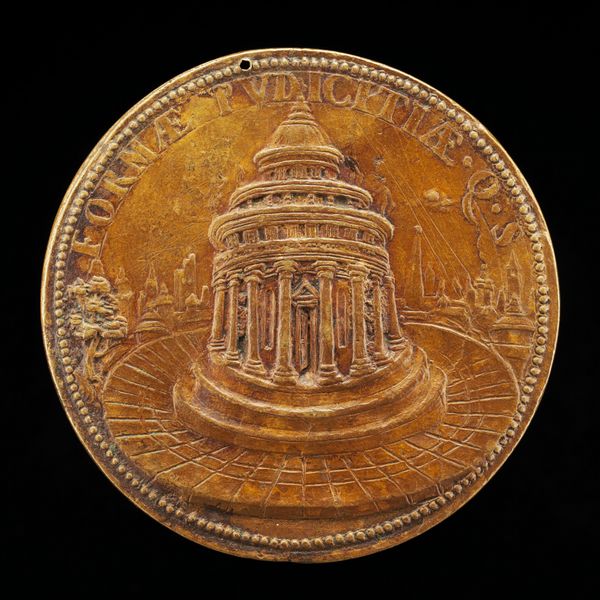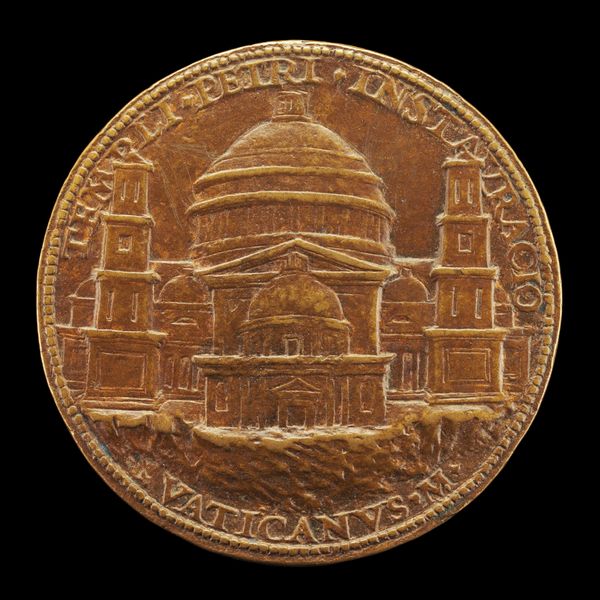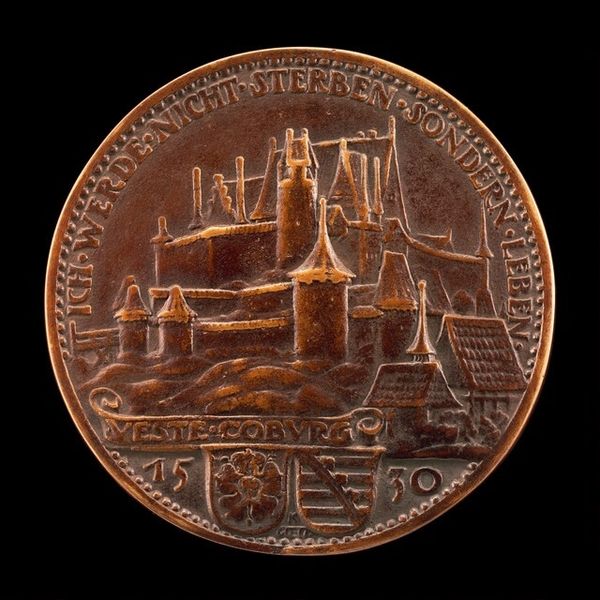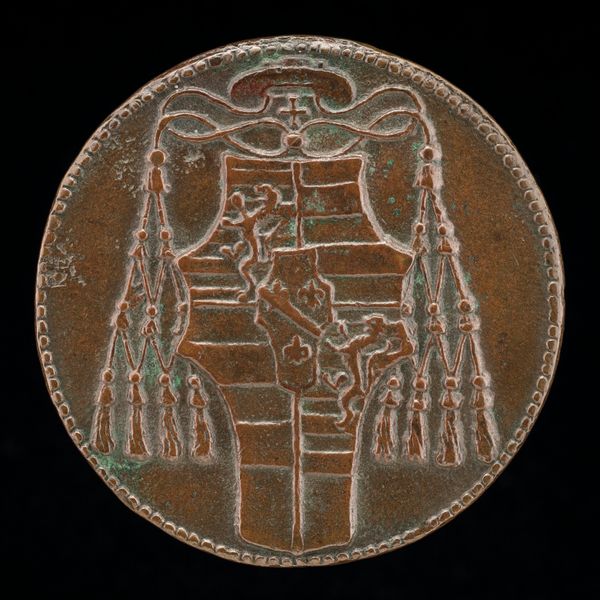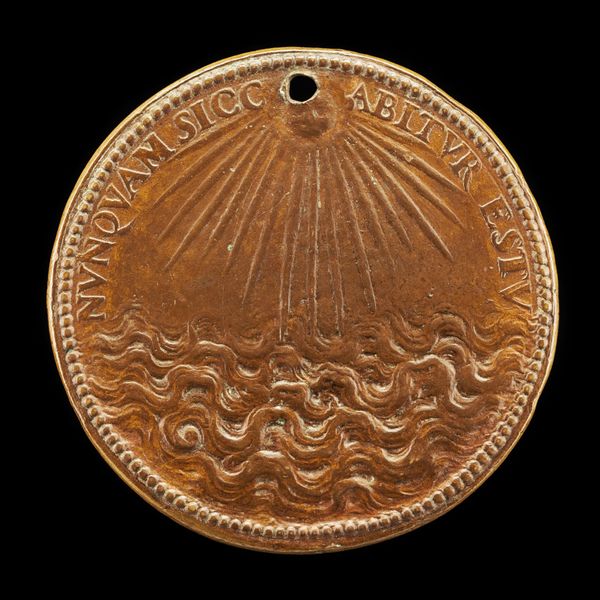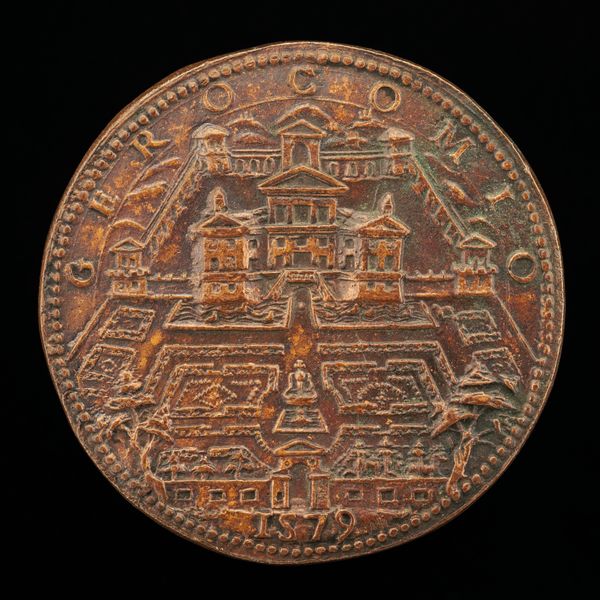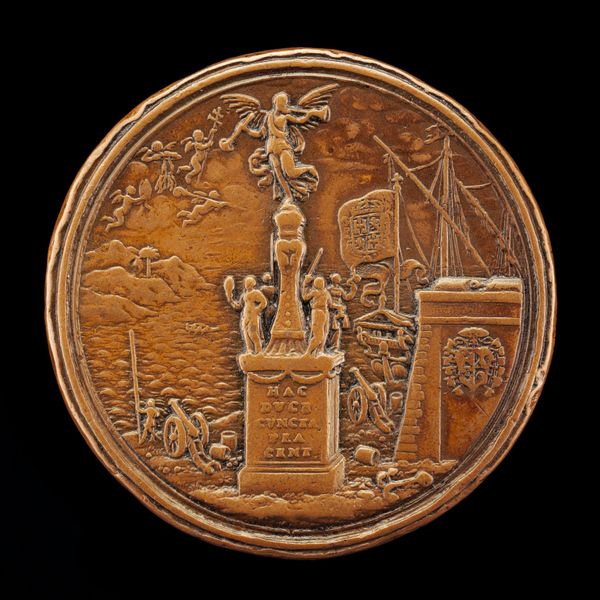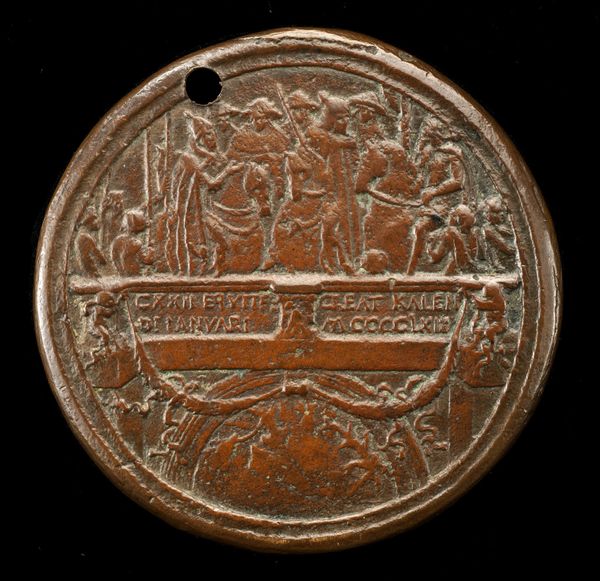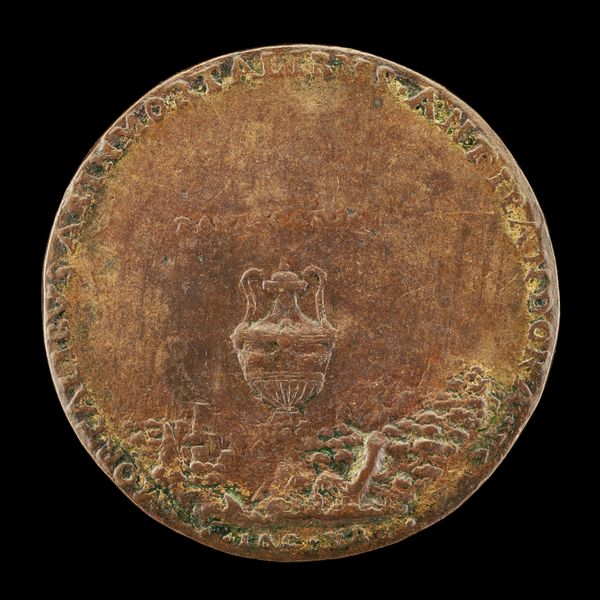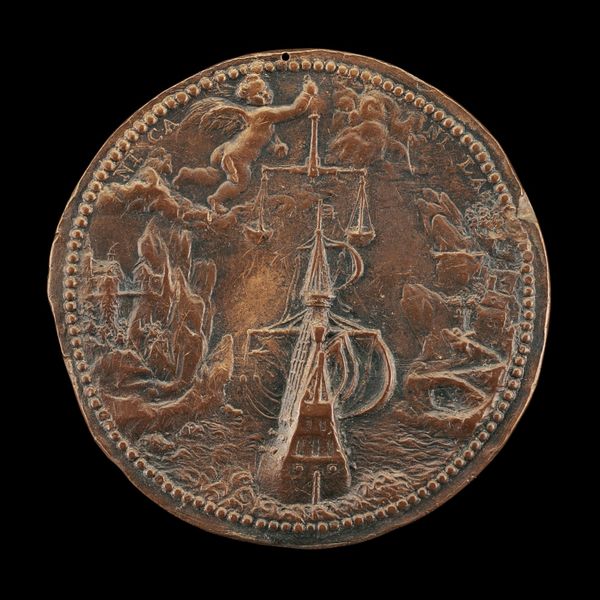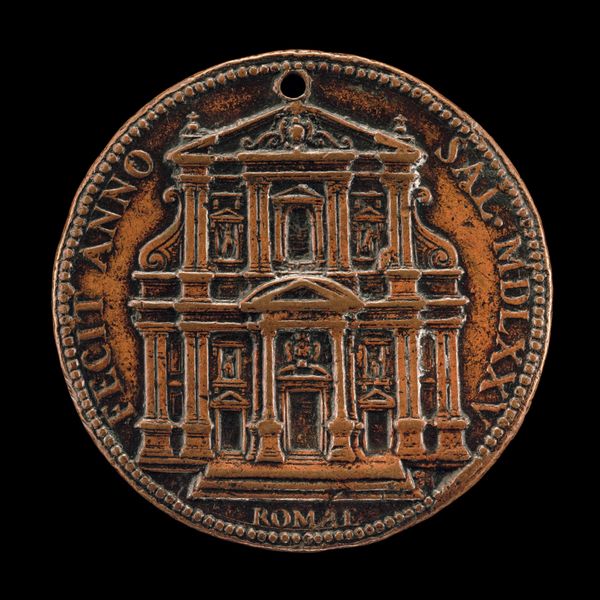![View of Castel Sant'Angelo [reverse] by Domenico Poggini](/_next/image?url=https%3A%2F%2Fd2w8kbdekdi1gv.cloudfront.net%2FeyJidWNrZXQiOiAiYXJ0ZXJhLWltYWdlcy1idWNrZXQiLCAia2V5IjogImFydHdvcmtzLzA1ZDM1ODJjLWVlZmMtNDMwNS05YzY1LWE4MzE4M2E4YmRkNi8wNWQzNTgyYy1lZWZjLTQzMDUtOWM2NS1hODMxODNhOGJkZDZfZnVsbC5qcGciLCAiZWRpdHMiOiB7InJlc2l6ZSI6IHsid2lkdGgiOiAxOTIwLCAiaGVpZ2h0IjogMTkyMCwgImZpdCI6ICJpbnNpZGUifX19&w=3840&q=75)
relief, bronze, sculpture
#
sculpture
#
relief
#
bronze
#
sculpture
#
cityscape
#
italian-renaissance
Dimensions: overall (diameter): 4.5 cm (1 3/4 in.) gross weight: 54.4 gr (0.12 lb.) axis: 1:00
Copyright: National Gallery of Art: CC0 1.0
Curator: This bronze relief offers us a fascinating look at the Castel Sant'Angelo in Rome, created by Domenico Poggini between 1585 and 1591. It's titled "View of Castel Sant'Angelo [reverse]". Editor: Immediately, I'm struck by the monumentality the artist conveys despite the piece's small scale. The dense details and material give it a weighty, almost solemn presence. Curator: Absolutely. The level of detail Poggini achieves is remarkable, especially considering the likely function of this relief. It could have been intended as a collector's item or perhaps even a medal, designed to commemorate the significance of this location in papal history. Editor: Looking at it from a contemporary lens, the Castel Sant'Angelo itself embodies complex narratives of power. Initially Hadrian's mausoleum, then a papal fortress, and later a prison—it’s a palimpsest of changing regimes and the control of Rome. Curator: Precisely! This particular view of it also provides a fascinating insight into urbanism and military defenses in the late 16th century. Notice how prominently the artist portrays the architectural structure and fortifications along the river. This speaks to the very real political instability of the era. Editor: That's true. The high vantage point could also symbolize papal authority and oversight of the city. The relief is essentially constructing and reinforcing an image of papal control and stability during a turbulent period in European history, in which this building, strategically located on the banks of the river, has been a witness to episodes of conquest and siege. Curator: And the craftsmanship elevates this from mere propaganda to an exquisite work of art. The way the light plays on the bronze surface, the precision of the lines, the clear intention to present it from an almost omniscient view. Editor: It certainly makes one think about who was meant to possess this object and how this perspective impacted their perception of Rome’s power dynamics at the time. Thank you. It helps decode not just the history of Rome, but how people thought about power itself.
Comments
No comments
Be the first to comment and join the conversation on the ultimate creative platform.
